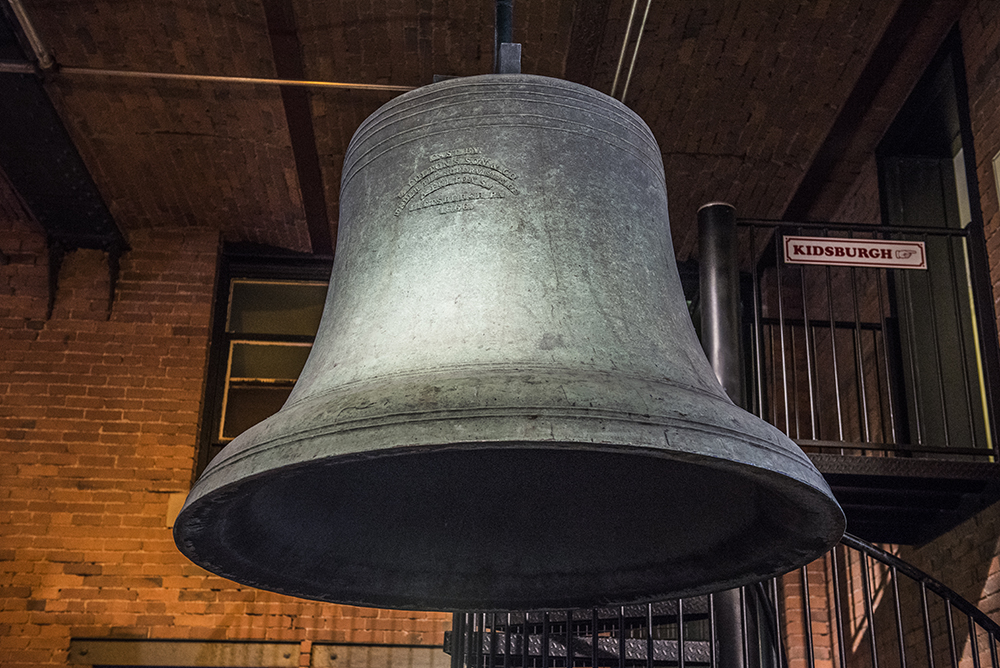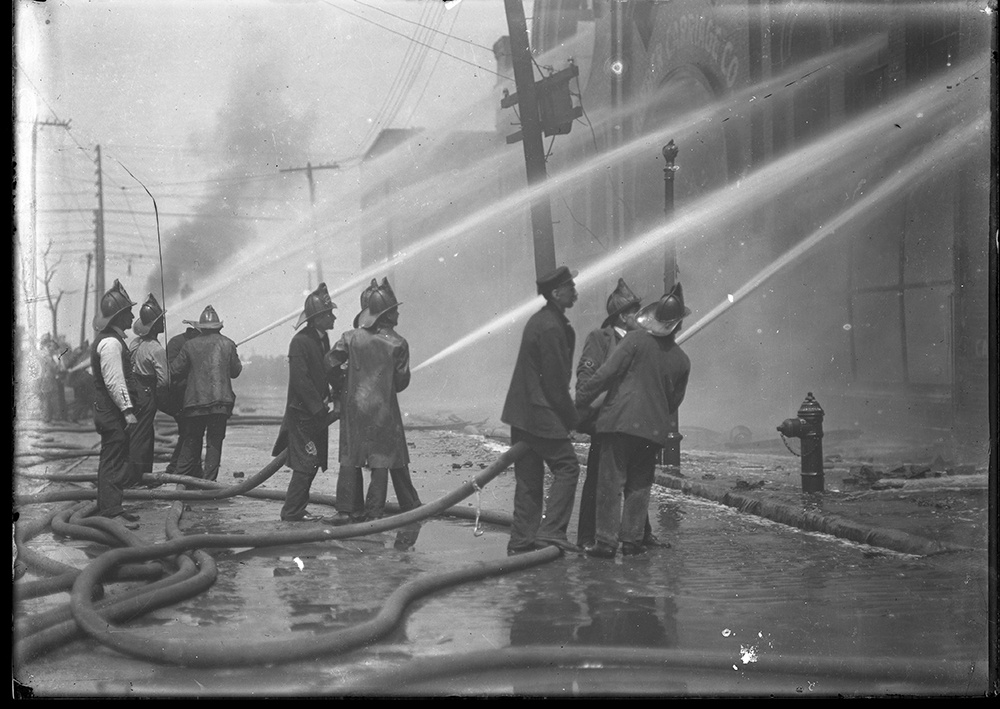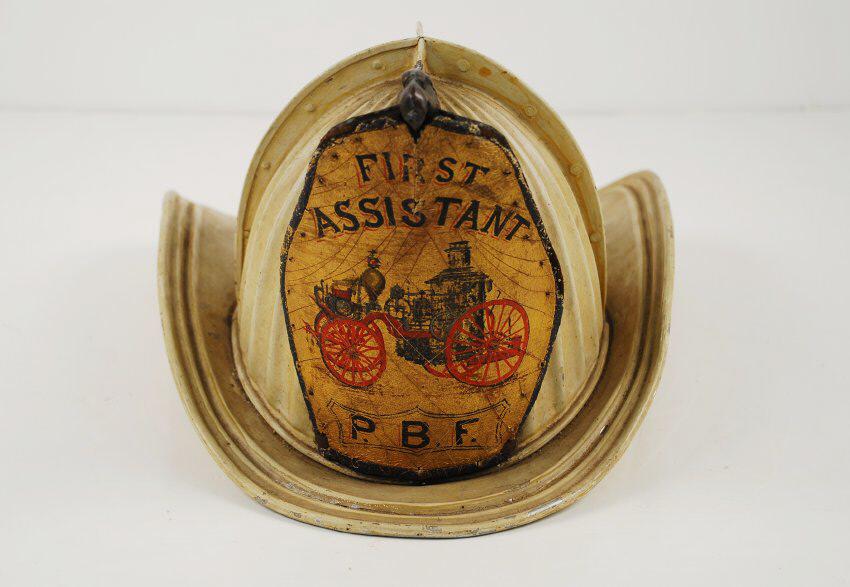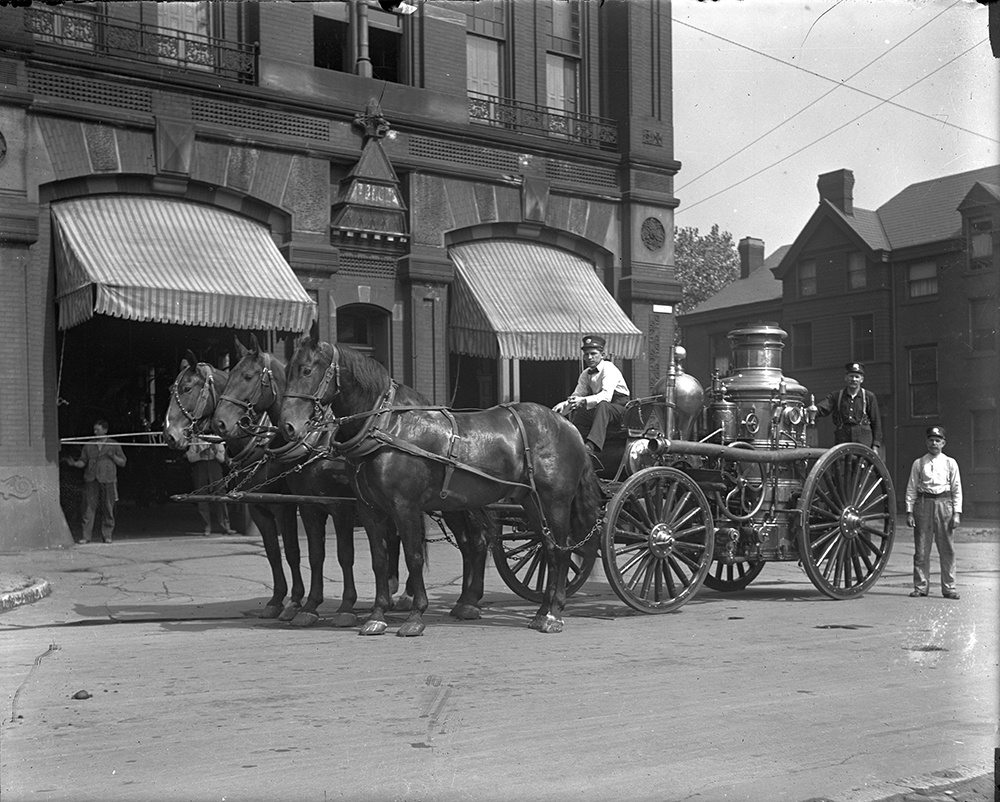The Pennsylvania State Mayors’ Association is encouraging all residents and houses of worship to ring bells for three minutes at 7 p.m. on May 3, 2020, to recognize those on the frontlines battling COVID-19, to show solidarity with elected officials and governments in this effort, and to demonstrate resolve that we will prevail in this challenge. This effort draws on a long history of using bells to communicate across distances and to mark important events or times.

The massive bell that hangs in the first floor Great Hall of the Heinz History Center illustrates some of the roles that bells have played in our region’s history. In the 1800s, as the population and number of buildings increased in urban areas such as Pittsburgh, city governments faced public safety challenges from disease and epidemics, social unrest, and disasters such as fires and floods. With no electricity or technological communications equipment such as the telegraph or the telephone, city governments relied on more rudimentary devices such as bells. During the Great Fire of 1845, when about a third of downtown Pittsburgh burned, period accounts document the use of bells to alert both city residents and members of the volunteer fire companies to the unfolding danger. Attorney Robert McKnight wrote in his diary, “Thursday April 10th Great Fire!!!!!Conflagration !!!! Wrote letters and at 12 M. heard alarm bells ring for fire. Followed the crowd down Second Street, to corner of Ferry, where an icehouse and shed were burning.”
In another account, Samuel Johnson recorded, “At the hour of 12 M. we had seated ourself at the dinner table, when “clang” went the bell on the old Neptune engine house. Being a member of that company we did not wait a second call, but flew like the wind, and with others reached the engine house and the machine was soon under way to the fire.” Most cities used a system of bells to mark time, ring out for important events, and sound the alarm for fires or floods. But as new technologies were invented in the second half of the 19th century, fire alarm systems became more sophisticated.
In 1852, William Channing, a Boston doctor, introduced the use of the telegraph to fire safety systems. Working with an engineer, they developed a system to more effectively connect city neighborhoods by telegraph, providing increased protection for businesses and residences. Other large cities adapted the system in the 1860s and ‘70s. The city of Pittsburgh, which modernized its public safety systems slowly, did not professionalize the fire service until 1870, relying on 12 separate volunteer companies in the years just preceding that upgrade. But the city did add the large bell, now displayed in the History Center, in 1866 as the central part of a fire system with fixed call boxes in 10 wards.
A. Fulton’s Son & Co. cast the giant bell, purported to be the largest ever made in Pittsburgh. Founded by Andrew Fulton, Sr., the company had more than four decades of experience in the business. An ad from 1839 listed “church and steam bells of every size,” as well as pumps and other metal goods as their products. Though retired by 1866, Fulton personally supervised the casting of this 4,000-pound bell. Too large to be cast at the Fulton foundry, the family arranged for the work to be done at the nearby machine shop of S.S. Fowler. When a bad heat led to subpar results, Fulton had the first cast broken up and a second bell made. This is the bell that now hangs at the History Center – after serving the city for more than 50 years.

Too big to hang in any existing tower, the city constructed a new home for the bell near the corner of Diamond and Ross Streets. Shaped like an oil derrick and made of thick wood beams, the structure soared more than two stories so the sound of this fire alarm could be heard far and wide. Used until 1892 to sound the alarm, new call boxes eventually took over that responsibility. But the bell continued to mark time and ring for important events, such as the end of World War I.
In 1920, the Eichleay Company moved the bell to a position of honor in front of the Historical Society of Western Pennsylvania’s (our parent organization) building on Bigelow Boulevard in Oakland. There it continued to be rung on the anniversary of the 1845 Fire and for ceremonial occasions. Almost lost during World War II when the Historical Society considered donating it to a scrap metal drive, the bell survived and Eichleay moved it again in the 1990s to the History Center building.
The piece now serves as a reminder of the central role that public servants and first responders have played during times of crisis. It bears silent witness to the challenges our city has faced in the past and the dedicated individuals who saw us through those difficult times. When the alarm has sounded in the past and now, there have always been Pittsburghers who answered the call.


Further Reading
On the History Center’s blog: Of Bells and Fire: Artifacts Recall April 10, 1845
Anne Madarasz is the Director of the Curatorial Division, Chief Historian, and Director of the Western Pennsylvania Sports Museum at the Heinz History Center.
